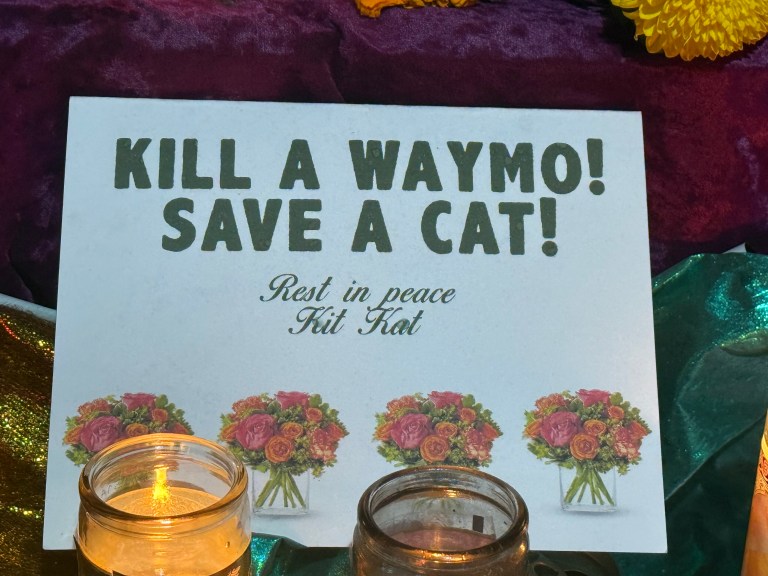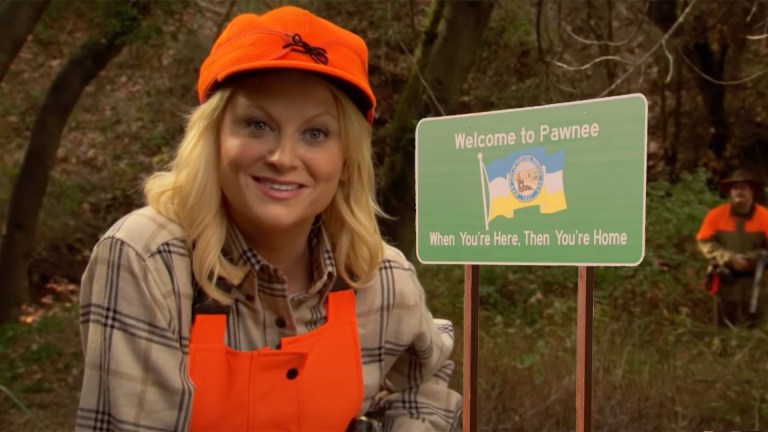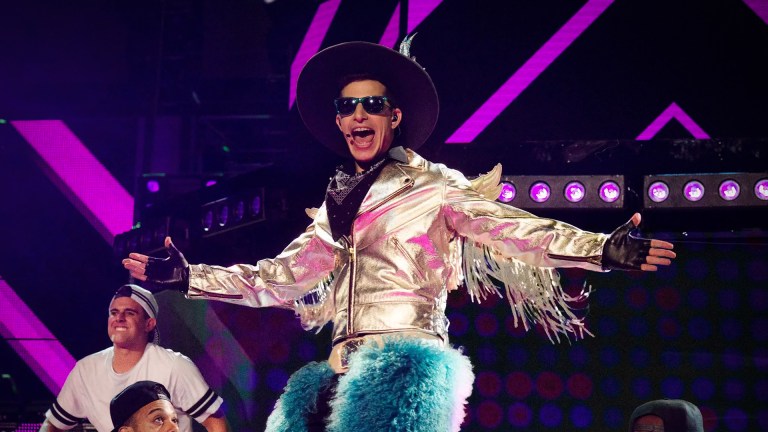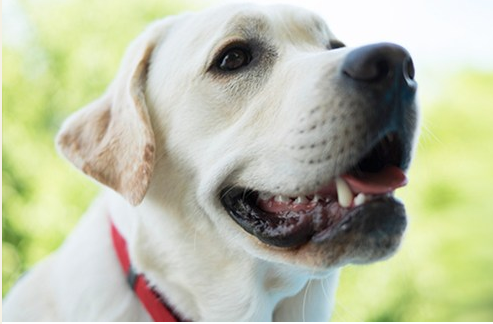
A Live-Blog Of The World’s Best Pet Conference
Two Thought Catalog writers will be reporting live from Purina's Better With Pets Summit, today, Tuesday, October 14th from 9-4 EST. See what's really happening here.

Two Thought Catalog writers will be reporting live from Purina’s Better With Pets Summit, today, Tuesday, October 14th from 9-4 EST. See what’s really happening here.
4:15PM: That’s our show! (Blog? That’s our blog!) Thanks for following along, and do us a favor and give your pet a really big hug for us. XO, Michael + Ella

And a special thanks to Purina!
3:55PM: Kurt Venator, a veterinarian at Purina, is going to talk about how pets have moved from being outside pets to indoor members of the family.
“Dogs spoke to purpose, to practicality, to utility.” Venator’s grandfather revered dogs as a service and utility. Since the early parts of the last century, we’ve invited pets into our homes and our families.
What is going on behind this force? What are the driving influences behind the change in the pet-owner relationship? There are cultural movements, societal benefits, and the growing power of social media and pet celebrities.
In the 1970s, a few key things happened to help further the benefits for pets and their owners. Veterinary medicine took great strides in the 1970s, but since then, there have been remarkable strides in innovation. Prevention and diagnosis have evolved. (20 years ago, vets had to sneak pets into MRI machines after-hours in hospitals to get them the treatment they needed.) Rehab therapy for pets has gotten way better, too. Healthcare for all – including your pets!
“One of the biggest questions we are now seeing pet owners face is “will this high-tech treatment help my pet’s quality of life, and how much will it cost?”
Dr. Venator believes the next 20 years of pet care will be a medley of prevention, diagnosis, and rehab, to benefit the relationship between pets and people.
Two really great quotes:
“You can’t separate digital and social media from veterinary medicine. And some people DO want to go into financial hardship to save their pet.”
“Keeping pets healthy is a way to keep civilization healthy.”
3:35PM: Pia Salk, a psychologist and animal advocate, is going to discuss the depth of the human-animal bond.
“We’re all animals. We forget that. […] We share a world with all sorts of other species. Developing empathy, making a connection — these are the ethics we’re trying to grow, and these are keys to mental health,” Salk says.
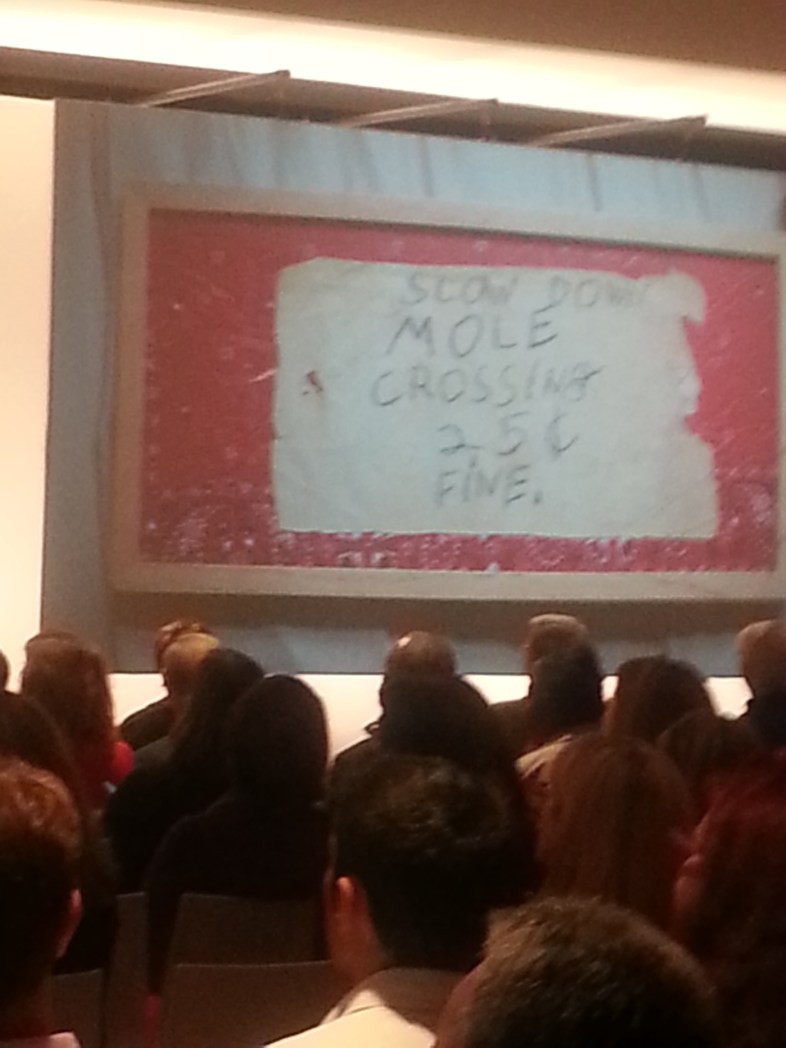
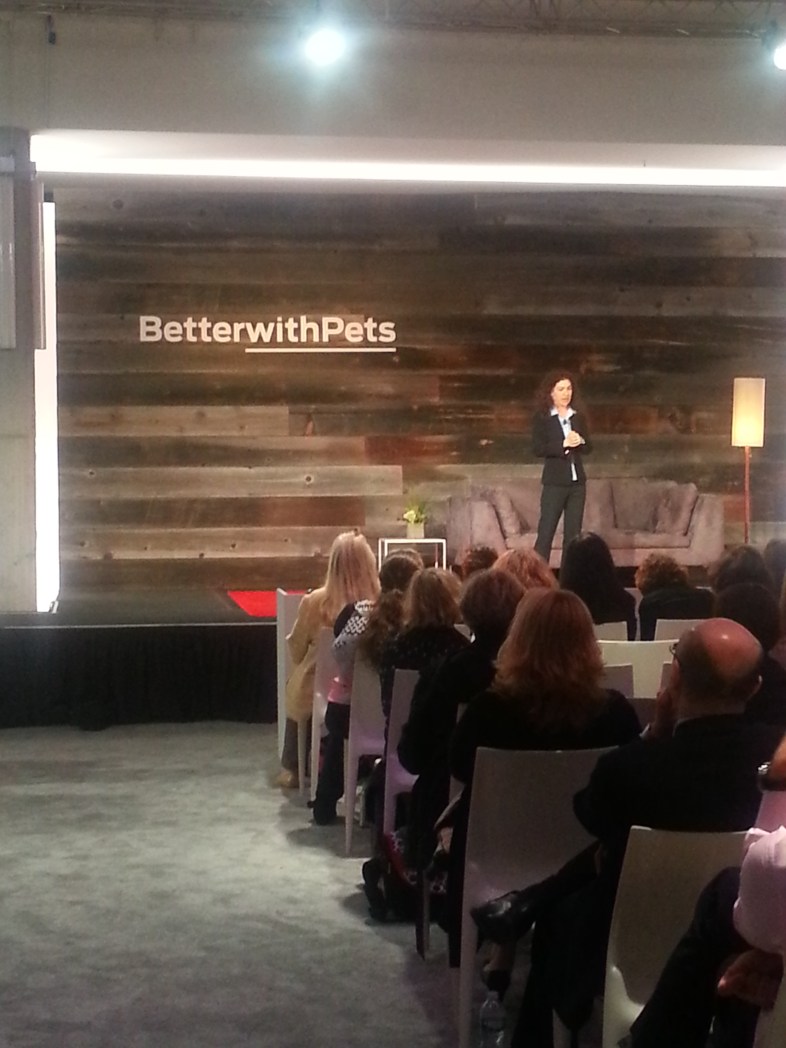
Salk went down to the area ravaged by Hurricane Katrina to help the animals who were either left behind or with families who were struggling in the aftermath of the devastation. The question she was most often posed was, “Well, what about the people?” But animals need compassion and stability, too, especially after they’ve lost their homes.
“This is a real, deep relationship. We are better with pets.” Salk believes that we should move beyond fun and cute, and really embrace celebrating our pets in the same way we celebrate other family members.
3:15PM: We have a ROCKET SCIENTIST in the house!
Mark Deadrick is an aerospace engineer. He starts the show off by explaining a project he started for TurboRoo, a tiny Chihuahua. (We were sitting in front of TurboRoo during lunch and we both literally aww’d for that entire hour.)
Mark says he’s a rocket surgeon, not a rocket scientist. He uses 3D printing to make parts for rockets. (Michael thinks that’s super cool.)
Okay, there’s a Reddit image on the big screen — remember the six-month-old chihuahua without two front legs? “No body wanted to make prosthetics for an animal this young. I created a 3D print for TurboRoo. It works like layering a cake. When it was all done — it took about three hours — we sent it off to TurboRoo, but it was too big!” They ended up cutting about half-an-inch from the back and put TurboRoo on it. Mark designed a four-wheeler and TurboRoo’s photos became viral!
There’s a video of TurboRoo running around and it’s the cutest thing EVER.
Another cart was created to better match his body. The design was reverted to a two wheeler and better designed to fit TurboRoo’s body. “There was a lot of response on the internet, so we thought there was a huge market for this, and that we could do something about it,” Mark says. “We got a lot of people interested in getting prosthetics for their pets.”
We’re all watching this poor dog named Lucy get stuck in a gravel pit with a poorly designed cart. Mark fixed the design and it looks like she’s doing better already. Yeah, the video shows that she’s a lot more mobile.
POOR RANSOM. His rear legs were deformed and the vets had to amputate them. He looks like such a trooper. He used to walk around on a sling, but a cast was made (imagine taking a nine-month-old pit bull terrier and sticking his rear end in a bucket to make a cast of his body!) and a cart was designed for him. “This is where we are right now,” Mark says.
Okay, they just brought out TurboRoo and he is absolutely tiny. He’s being strapped into the cart. AND HE’S WALKING /PUSHING HIMSELF AROUND. This is absolutely heartwarming. #Bless
3:05PM: Mayhem Poets have taken the stage. Kyle Rapps, Sublime Divinity, and Scottt (with three Ts!) — Kyle, Maven, and Scott — have a question for us all:
What are pets?
Therapists.
Surrogate family, friends and neighbors.
“They are the true masters and we, the humble servants.”
“TO FRISBEE OR NOT TO FRISBEE!” (As writers and English nerds, okay, that’s pretty good.)
Ella will now be laughing about ‘Charles Barkowski’ for the rest of … forever.
2:50PM: Another break! (Which means, another opportunity for Ella and Michael to hunt down more dogs to snuggle.)
2:20PM: Music for pets! (I promise I will not make any more Baja Men jokes. This is some really lovely concert piano work right now.)
Joshua Leeds, a music producer and sound researcher, and Lisa Spector (the pianist, who went to Juilliard), teamed up when Lisa realized that Joshua’s music calmed her puppy.
Joshua and Lisa have spent 11 years working on music and sound for animals. (Joshua has a history of working in sound therapy for children on the autism spectrum.) Auditory sensory depth influences behavior in animals.
Cats hear three times as high as humans do, and dogs hear twice as high as humans — so no wonder your pet can hear you opening the fridge in the middle of the night.
Joshua and Lisa work with tone, tempo, and pattern identification, to rearrange and adjust classical music for pets and their hearing spectrum.
Okay, so Lisa is playing the piano and we’re all totally entranced. Joshua, is on the other side of the stage explaining that with music we can calm dogs down. “We found that musical treatments have the same effects on dogs as it does with stressed individuals. In other words, dogs love simple sounds.”
Lisa says that their songs are played at over 1500 shelters around the United States. It calms down the dogs and increases the rate of adoption. The music helps fearful dogs as well as aggressive dogs to calm down and it helps people calm down. That calmness transfers over to the dogs. How great is that?
They have developed the iCalmDog, a player that comes pre-loaded with over four hours’ worth of music for when your dog is stressed, in a new environment, etc. (There’s over 18 hours of programming in the chips that the iCalmDog uses.)
They teamed up with Ms. Stilwell (the trainer from earlier in this talk) to create a program to acclimate dogs with separation anxiety into resolving the dog’s stress about being left alone.
“Our goal is nothing less than to create calm dogs. […] The initial beneficiaries would be shelters and service dog organizations.” (1.2 million canines are euthanized a year, and most go to shelters for behavioral issues that could be treated and trained with therapy. Only 40-50% of dogs trained to become service dogs graduate their service program, and therapy could help raise those odds, too.)
1:50PM: How protecting pets is key for protecting victims of domestic violence — Rita Garza of URI has taken the stage.
“We recognize their increasing value and position in family in everywhere we look these days. In cancer wards, in the military — really moving forward. […] But pets can be the very reason why pets can stay in abusive or violent situations. As many as 48% of women stay in abusive situations out of concern for their pets’ safety.”
Hurricane Katrina and Superstorm Sandy proved that people will not leave their pets behind.
“More than 70% of pet-owning women entering shelter reported that their batterer had threatened, injured, or killed their pets.” The majority of URI’s clients are women, but domestic violence can happen to anyone anywhere and at anytime (so please, if you or someone you love is in an abusive situation, there are a lot of places that want to help).
URI has worked with the Mayor’s Alliance for New York City’s Animals, because so many shelters do not accept pets. Yet pets are where you find unconditional love, support, grounding, emotional stability — all of the things you need, especially when you’re trying to escape an abusive situation.
“Why would we ask a domestic violence victim to make a choice between safety, and their pet?”
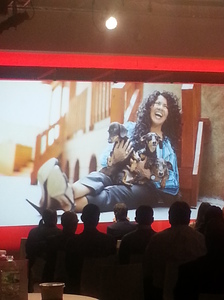
URI has built a dog park at a domestic violence shelter in New York City.
Pamela, a domestic violence survivor, is telling her story. She “tolerated a lot of insanity” so she and her three cats, Ricky, Lucy, and Gizmo, would have a home. She went into a shelter, and her son temporarily took care of her pets, but she missed them. She was really afraid that they would have to go to a shelter. She moved into a pet-friendly apartment in the URI shelter in September of last year, and attended the various counseling and internship programs for a new beginning. “The PALS program is so important. If it’s available, the victims [of domestic violence] will leave their situations sooner instead of later.”
Only 26 states in the U.S. offer orders of protection for pets. For safety planning for both pets and people, you can go to www.urinyc.org.
AND IT’S PAMELA’S BIRTHDAY. Happy birthday, Pamela! (Seriously, so inspiring.)
1:29PM: Dan Smith, from Purina R&D, will be talking about ‘Imagining A Better Future With Pets.’
(Purina has over 400 scientists working to better the lives of pets, including a puppy pre-school and a kitten facility. So they really know what they’re talking about.)
“Imagine that your dog or cat could live a longer, quality life with a healthier body.” Everyone wants that, right?
They spent 14 years on a study that proved they could extend the lives of dogs by two years. They could also extend the age at which chronic, age-related illnesses would take over. The principle mechanism for this was eating less. (Yes, from a pet food brand! They really do have your pet’s best interest in mind.)
“We know that over 50% of dogs and cats are overweight. […] We know that pet owners struggle with this.” They have done research on how to increase metabolism and reduce weight gain on pets that were overfed.
“Imagine being able to be at work all day without concern for your dog needing to go to the bathroom.” They worked on dog litter so that dogs could be trained to go inside like cats. But humans enjoy taking their dogs out for walks.
“Imagine being able to order a pet food online that is just right for my dog.” You can order custom dog food — down to the protein — with feeding recommendations for your pet.
SO MUCH goes into your pets’ health. Clean teeth — “imagine no dog breath;” eye health — dogs don’t see with 20/20 vision as adults, and stress starts to degrade their vision; there’s so many little details that pose challenges today, that might hopefully be lessened in the future.
1:20PM: Aaaaand we’re back! Still on a Manny the Frenchie high, though. Seriously, we want one for the TC office.
The video playing is a firsthand account of a veteran whose puppy is helping him recover from PTSD. It’s heartbreaking and heartwarming and wonderful and yay, team pets.
Adam Wade has taken the stage. He will be talking about cats and how smart they are. (Ella has a cat, she is particularly excited for this. Holly G. is a genius.)
Adam has a story about his cat using the toilet! Meet The Parents style! “It was like seeing a unicorn!”
(Note: Unicorns would probably not make good pets.)
http://instagram.com/p/uJCp_upJXu/
12:19PM: Lunch break! (Told you we respond well to food cues.) We’ll be back, hopefully with more pictures of dogs.
UPDATE: WE FOUND MANNY.
http://instagram.com/p/uI7bA2JJdT
http://instagram.com/p/uI7kCfHmuZ
Michael ate 4 sandwiches. And a brownie. And half a cookie. And three handfuls worth of chips.
11:50AM: TV Host and dog trainer Victoria Stilwell is on stage.
“Life can be pretty grim without pets,” she says. (I can agree with that.)
Ms. Stilwell is all about positivity in pet training. And there’s one decision that you need to make that affects your entire relationship with your pet. “There are two paths and you can go down either of them. Be honest with yourself.”
She says that our bond with dogs are breaking down. Dogs are biting people and there are more and more dogs in shelters. “How did things get to this point?” Where did we go wrong?” she asks. She says that dog training became popular since the last 100 years. In the 60s and 70s, trainers came out and said that there are better ways to train dogs.
- Be your dog’s pack leader.
- Never say “no” to you dog.
- And only use food to train your dog.
- Shock collars don’t hurt when you use them correctly.
But WHO DO WE BELIEVE?
Ms. Stilwell says there’s a great debate happening right now. It’s traditional dominance training vs. modern positive training.
Traditional dominance training:
Alpha mentality, physical punishment, intimidation, fear, submission.
Modern positive training:
Guidance, reward, trust, redirection, choice, cooperation
“You can’t use both,” she says. “The only good thing about this is that science has spoken.” She’s asking which one science has proven to be the most effective method of training. We all chose modern positive training (and we’re right).
“We are living in a golden age of teaching and training and living with our pets.”
There’s an area in a dog’s brain that lights up when you show them a food reward — and this also happens when the dog’s owner returns from another room. (Fun fact: We’d respond the same way when you give us food.)
11:31AM: Janet Jackson is here. Okay, not that Janet Jackson. She’s a researcher at Purina R&D. That’s super cool.
“When my cats look at me, I can see the love in their eyes. They follow me around, they’re very connected,” Ms. Jackson says.
Dogs and cats, as they get old, suffer from cognitive decline. We thought it was because of old age, but it’s actually because their brains don’t get enough glucose that leads to cognitive declines. Whoa!
We’re all clapping for Gary, because he’s the lead researcher who found out about this. Go Gary go! But Purina works as a team. We’re all clapping for the team at Purina!
TIL Medium-chain Triglycerides are gluten-free. And we’re watching a video now. There’s an older dog that is suffering from severe cognitive decline — he has trouble overcoming obstacles, disorientation, mobility issues… That’s so sad! But apparently, we shouldn’t dismiss this as something that happens with old age. Through Purina’s research, adding MCTs (Medium-chain Triglycerides) will help improve pets’ cognitive ability. Thank goodness.
Janet Jackson has four cats!
Scientific research is great, but seeing it in action is really rewarding. (Ain’t that true about life?)
January 2015: this food will be available for YOUR pets, too.
11:02AM: Stan Marks is on stage now. He introduces us to Bean, a little Pit Bull Terrier that couldn’t walk.
“She had a plethora of medical conditions…it became clear to us that Bean was suffering from muscular dystrophy. It is the most common muscle disorder that affects humans. This condition affects dogs as well, preventing them from walking…”
We’re all silent and watching the slideshow, because Bean looks like a beautiful, wonderful dog and Stan Marks has a great accent.
He’s showing us a video of Bean. Oh my God. She is retching and looks so sad. “She continued to deteriorate,” he says. “To feed her, we needed to use a feeding tube. We place feeding tubes in dogs and cats every day, whether temporarily or permanently.” Dr. Marks used a video imaging system to look at Bean’s esophagus to see how he can intervene. The food wasn’t moving into her stomach. It was getting stuck. “This happened every single time she ate or drank.” Dr. Marks used a minimally invasive procedure to treat Bean.
Bean looks healthy now. She gets fed through a syringe and a tube. It’s flushed with a bit of water, cleaned and “good to go until the next meal. This is a low-profile gastrostomy tube.
But a radical procedure was necessary to keep Bean alive! “Her back was behind the wall. We moved to remove her voice box. The procedure took three hours to perform. Bean recovered uneventfully.”
Bean looks like she’s happy and healthy. “Her quality of life is outstanding.”
Dr. Marks says we can live without 40 days without food. One day without water. But not one second without hope.
BEAN DRESSED UP AS A PUMPKIN FOR HALLOWEEN.
“When you lose your voice box, especially as a dog, you lose the ability to cool your body down,” Dr. Marks says. “When you are panting, the air is going in and out of that hole. These dogs are extremely predisposed to heat exhaustion, but you can counteract that with ice packs!”
OH MY GOD. BEAN IS HERE? BEAN IS HERE.
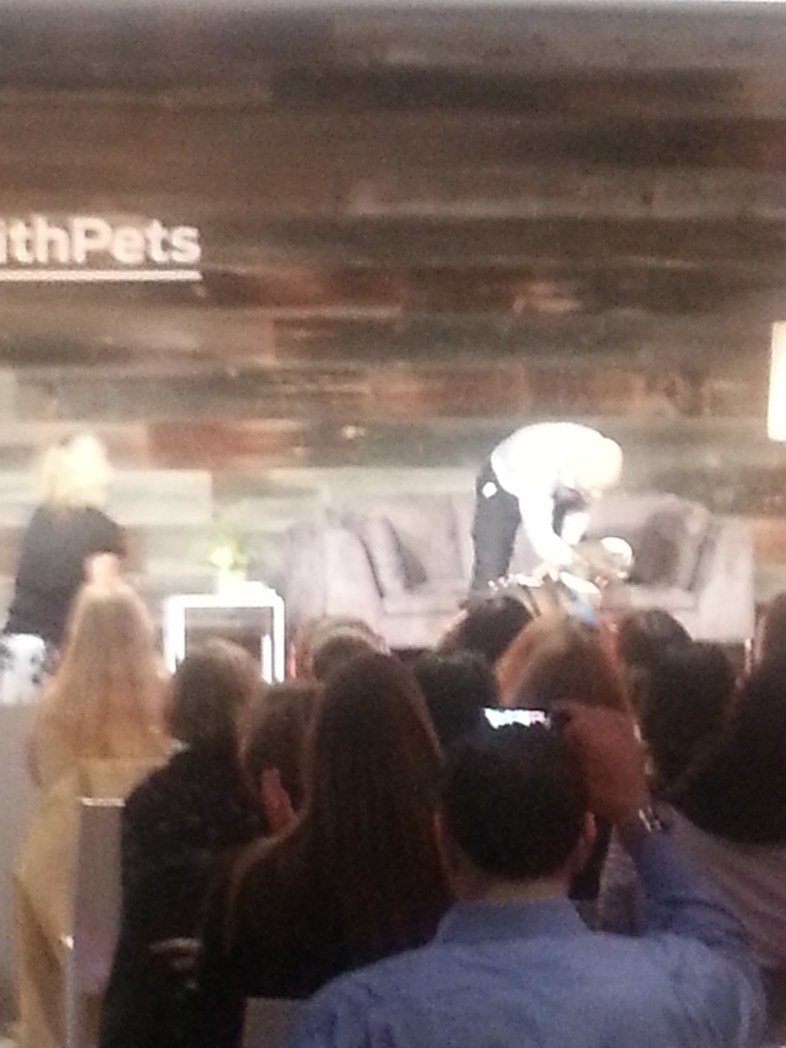
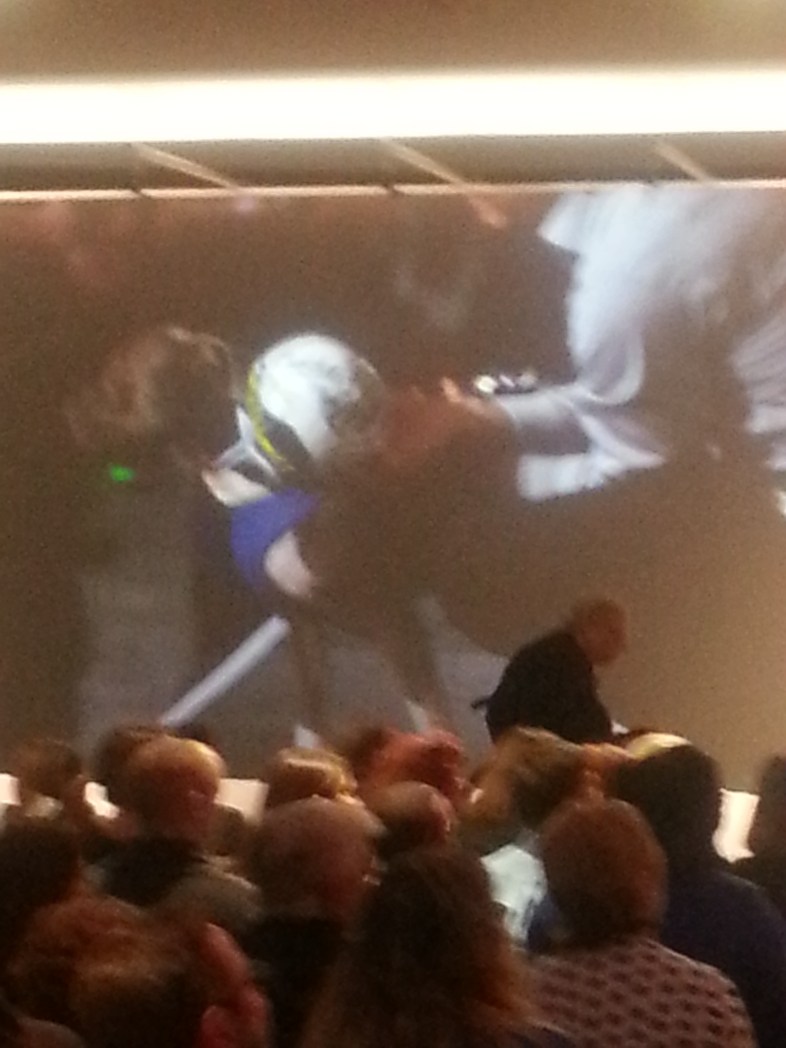
10:58AM: GUYS, DOGS OF INSTAGRAM AND CATS OF INSTAGRAM ARE HERE. (Follow them on Twitter: DogsOfInstagram and CatsOfInstagram!)
They’ve been both curating cat and dogs photos and their content comes from the community.
Whoa! These two have never met before. Wait, they’re all from Minneapolis? Small world!
10:52AM: There is a beat boxer and a DJ on stage.
http://instagram.com/p/uIxENJJJdP/
“When things get ruff, ruff, we don’t give up, up.” This is better than that Baja Men classic, ‘Who Let The Dogs Out?’ Way better. THE BEST. It’s basically ‘Shake It Off’ but for pets.
10:45AM: FIVE MINUTE WARNING. You guys won’t believe the cute pets over here. We saw a little daschund. Want. So. Bad.
10:23AM: Hi, we’re on break. We just saw a frenchie.

10:05AM: MC of Better With Pets Summit now introducing Ed Creagan, MD.
Dr. Creagan is an Oncologist at Mayo Clinic. In ’96, Dr. Creagan met a man who was dying of cancer ask for Max, who he thought to be a spouse or a child, but turned out to be the man’s 100lbs German Shepherd!
“There is an energy, there is a chi, there is a karma, that a pet shares with you and energizes you in your life,” says Dr. Creagan. “There is tremendous interest in caring for patients’ dogs and cats while the patient is in care.”
Dr. Creagan says that patients get very distracted because they want to know if their pets are okay. “It’s the patients that are demanding engagement with the pet community! When the patient and the family demand it, we, as physicians, need to meet it.”
A pet’s condition can enable patients to develop healing relationships and energize patients to drive them to seek closure.
“About 60% of new physicians are women. The tide is turning [regarding holistic healing] and pets are going to be a bigger factor.”
“Data shows that hugging pets, loving our pets reduces cortisol and increases oxytocin,” Dr. Creagan says. That means a five time greater chance of surviving a heart attack than when you don’t have a dog. BUT, cats increase more oxytocin than dogs!
The MC is really poignant right now.
“Unconditional love, joy and experience. That’s what pets give us right now,” Dr. Creagan says.
9:40AM: GUYS, ARE CAT VIDEOS ART?
Scott Stulen and Will Braden think so. They connect art with culture. Their goal is to make art relevant. So, what happens when an existential French cat get these two guys their dream job?
Take content for example — we consume it, we share it. And that’s really evident with cat videos.
There is a CAT VIDEO FESTIVAL in Indianapolis? Over 10,000 people showed up. There is a cat culture out there. Wow, I’m getting chills down my spine. We’re all chanting, “Cats, Cats, Cats,” right now.
This supposedly one-time festival grew into three consecutive years, and perhaps, one of the most talked about cat…event… Meow.
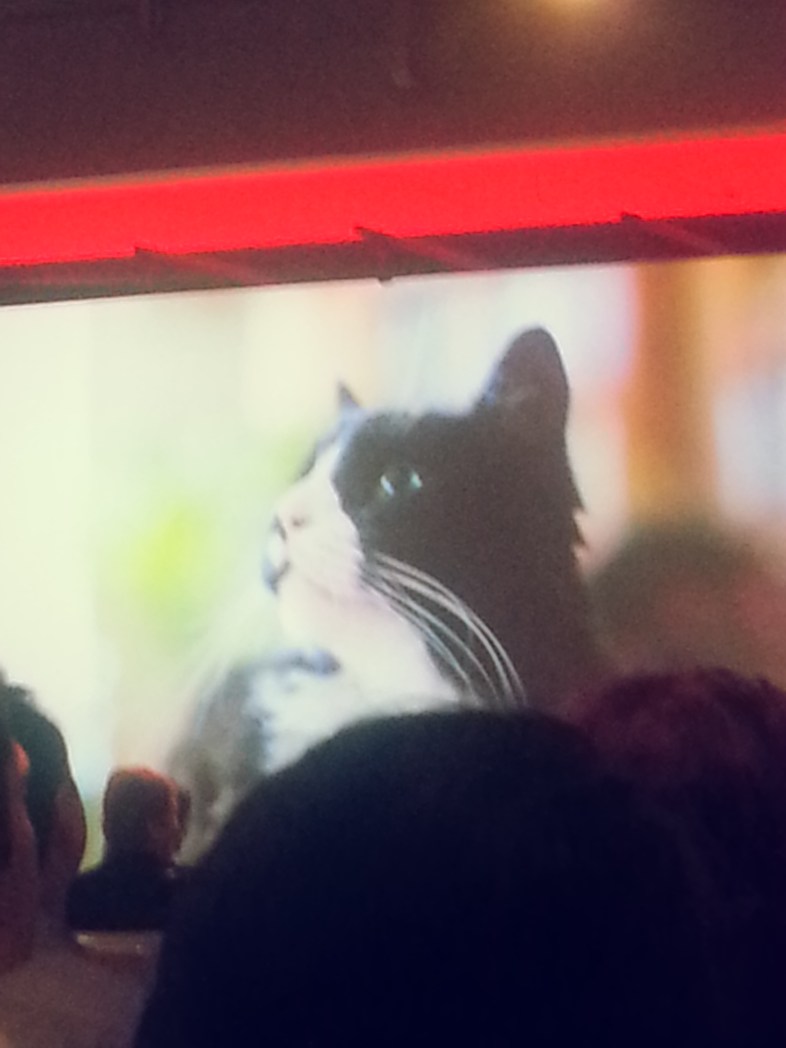
I’d like to point out that…Roger Ebert called this cat video festival the “best thing on the Internet.”
https://twitter.com/ebertchicago/status/241709223610810368
And at the festival, cat enthusiasts can win the Golden Kitty, if you have the purrfect cat video.
Remember this, cat owners: “Dogs are obedient, dogs aim to please. Cats don’t care.”
Will Braden says that the internet is now the playground for cats. “There’s no cat parks, you don’t take a cat out on a leash.”
Cat videos are genuine — that’s what Scott Stulen thinks. Everyone is ready for this, because it is true. “Cat videos brings us joy!”
Since the first festival, Scott moved on to find different ways to get people engaged with art. His job is to think about the future of pets, but also, the future of museums. “Will is still making cat videos for a living, and we should all be jealous of him.” And jealous we are.
“Cats are very easy to put human characteristics into.” Basically we project our neuroses into our cats. (Which is totally true, I think Holly G. is all the craziest sides of me, and that’s why I love her.)
And we end with: “It’s not about watching cats. It’s not about videos. It’s about watching cat videos together.”
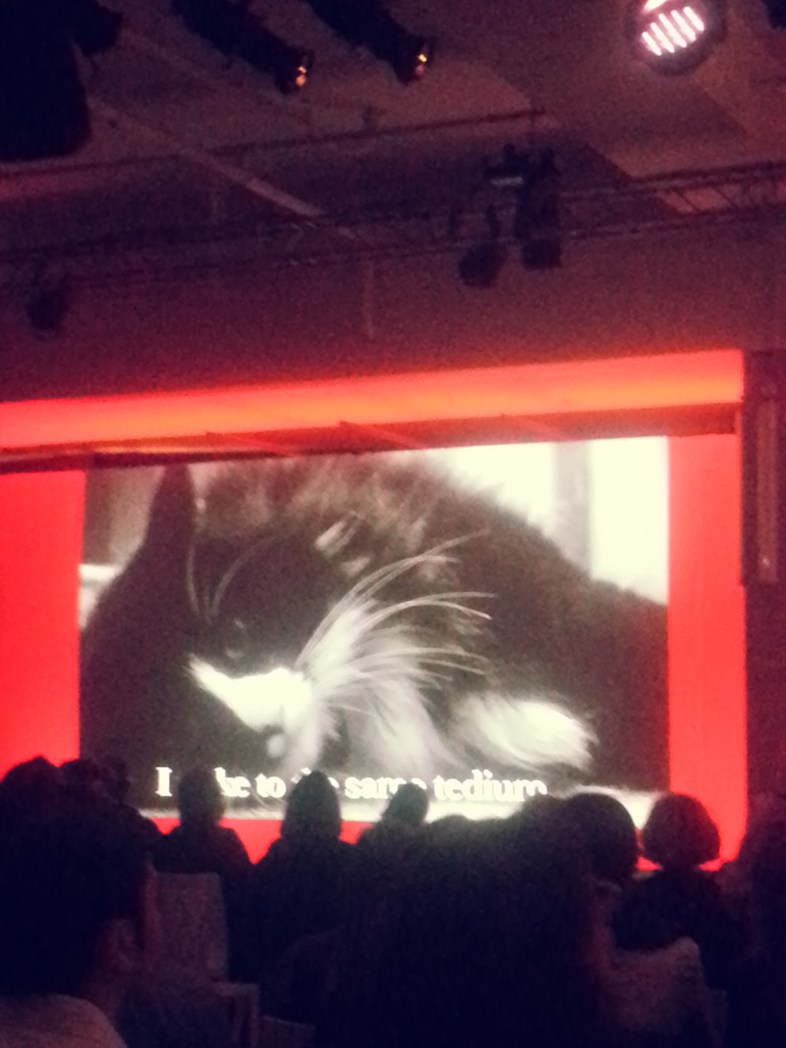
9:25: The first presenter is 14 year-old Brooke Martin, who invented iCPooch. 14. 14!
Tech is defined by practical purposes. We all have smartphones — shows how connected we are. “This strengthens the human connection” Brooke says.
Human to pet interaction is only physical at the moment. But human to human interaction goes beyond that. So why not for pets? Brooke’s dog had separation anxiety, so she did some research and found out that canine separation anxiety affects 10 MILLION DOGS in the United States. Her solution? iCPooch. You have a video chat with your pet and give them treats to calm them down! Isn’t that incredible?
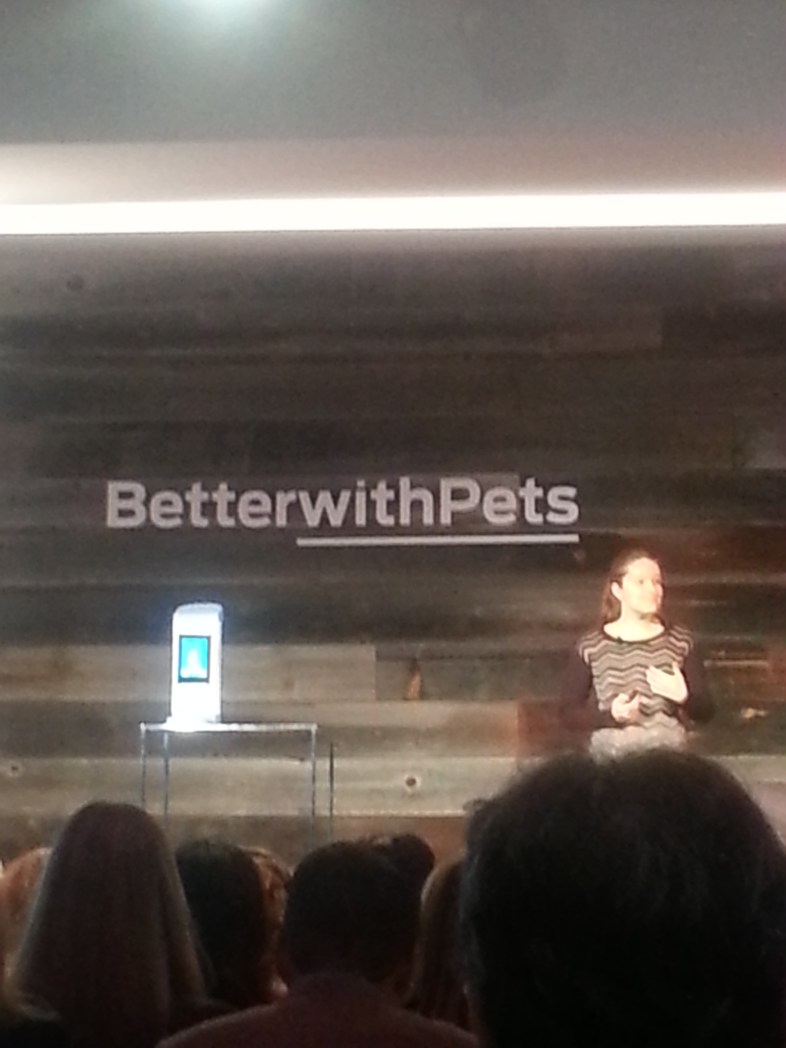
“Being separated from your animals is so heartbreaking.” Brooke has met with soldiers who don’t want to be deployed without their pets, college students who will miss their dogs (and okay, mayyyybe their parents), and people in hospitals who won’t be able to connect with their pets.
Imagine the places you can place an iCPooch… In the living room, by your pets’ bed. The trash can… The bathroom…
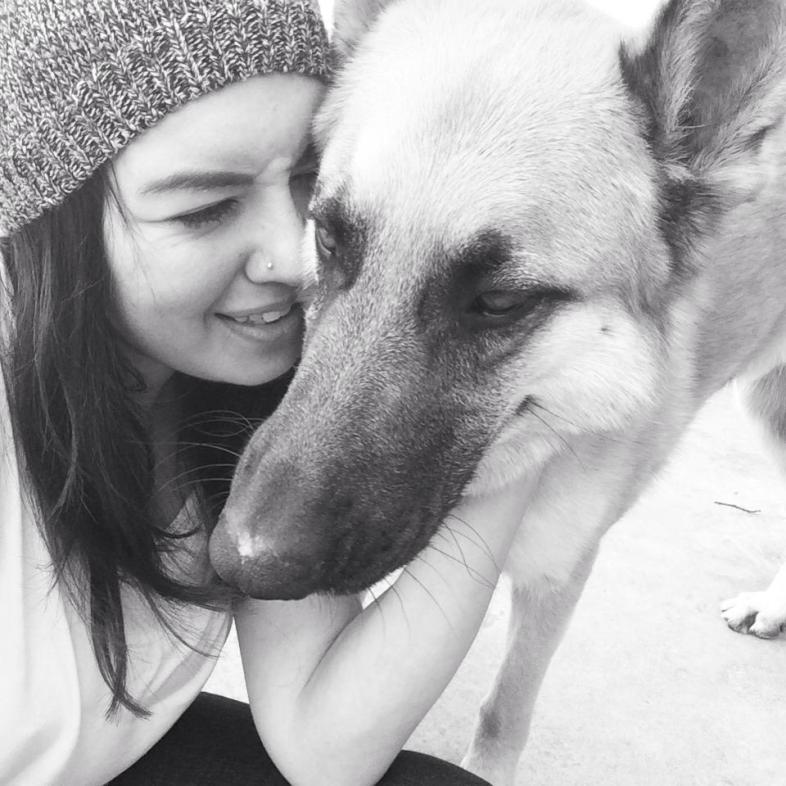
This is Max, who lives with my parents back in Los Angeles. Whenever I’m home, we basically become inseparable and he never leaves my side. If I had iCPooch, maybe we’d stop being each other’s ghosts. (Okay, we’d still be inseparable, because he’s my baby, but still.)
9:15AM: Guys, OH MY GOD. WHAT IF ANIMALS HAD A CONFERENCE CALLED BETTER WITH HUMANS?
Now we’re guessing which are dog and cat poems.
#1: A poem, by a cat: MINE, MINE, MINE, EVERYTHING IS MINE. LEAVE. GO. MINE.
#2: A dog poem?: SIT?SIT?SIT?SIT?SIT?SIT?SIT?SIT?SIT?SIT?SIT?SIT?SIT?SIT?ILOVEYOUOMG
#3: A cat poem?: BOXES OMG
#4: A dog poem?: ROUGHHOUSING I AM NOT BITING! THE THIGH.
#5: A cat poem?: TELL ME EVERYTHING. TELL ME WHY. TELL ME WHY. TALK TO ME.
#6: A cat poem?: 996…TAKE NOTE. 997… PLEASE. 998… WHY ARE YOU LOOKING AT ME? 999… THIS ROLL… 1000… HAS 1000 ROLLS.
#7: A dog poem?: DON’T LEAVE ME PLEASE DON’T LEAVE ME.
#8: A cat poem?: TIME TO POSE. TIME TO NAP. TIME TO EAT. TIME TO NAP. MIDNIGHT? TIME TO JUMP ON YOUR FACE.
#9: A dog poem?: I’VE BEEN WAITING FOR YOU FOR 18 SECONDS AND IT FELT LIKE 18 YEARS.
How’d you guy do? Ella and I got 9/9. We’re perfect pet owners, what can we say?
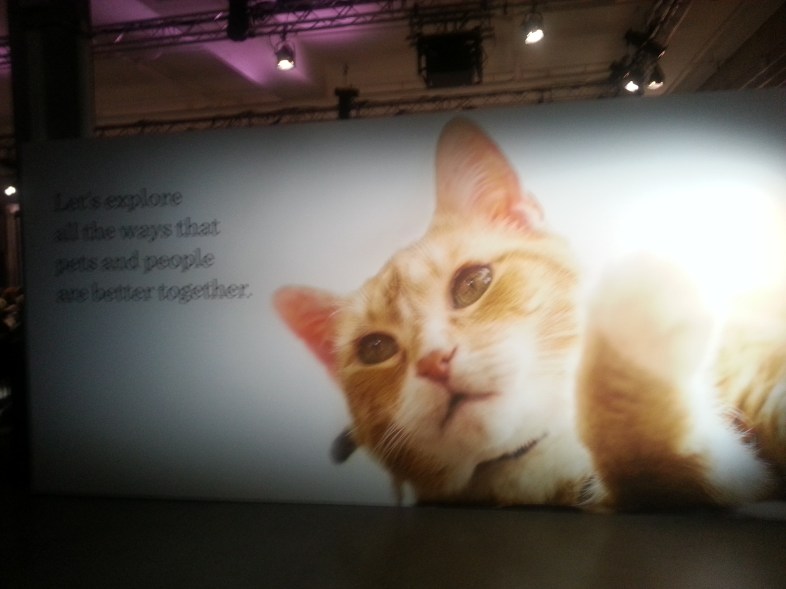
9:10AM: Are we better with pets? Oh HECK YEAH.
The idea of animals — pets — being intertwined with music is very ancient. Note to self: Look up Balthus and Mitsou.
9:00AM: Hey guys, Thought Catalog here at Purina Better With Pets event! ![]()
